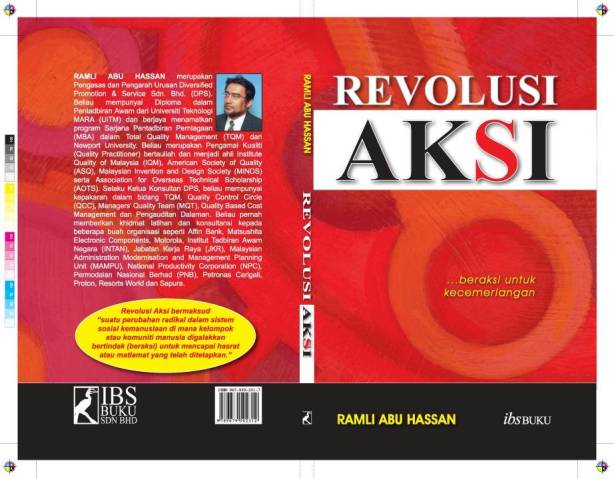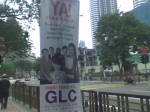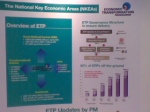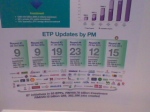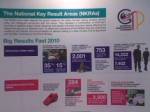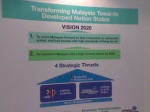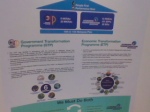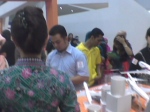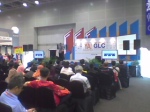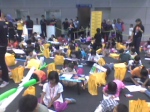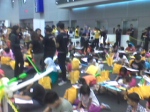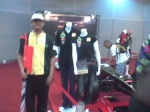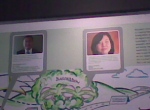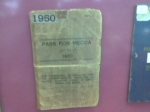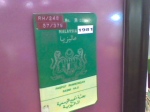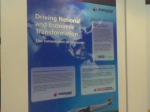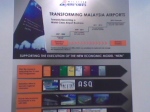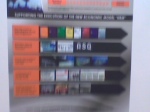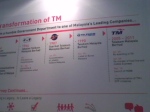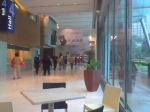Lets have a look what is the Education status in Malaysia (ref:Wikipedia)
From Wikipedia, the free encyclopedia
Education in Malaysia is overseen by two government ministries. The Ministry of Education (Kementerian Pelajaran) handles matters pertaining to pre-school, primary school, secondary school and post-secondary school. Matters regarding tertiary education are dealt with by the Ministry of Higher Education (Kementerian Pengajian Tinggi). Although education is the responsibility of the federal government, each state has an Education Department to coordinate educational matters in its territory. The main legislation governing education is the Education Act of 1996.
Education may be obtained from the multilingual public school system, which provide free education for all Malaysians, or private schools, or throughhomeschooling. By law, primary education is compulsory. As in many Asia-Pacific countries such as the Republic of Korea, Singapore and Japan,standardised tests are a common feature.
History
Batu Pahat High School, Johor
Sekolah Pondok (literally, Hut school), Madrasah and other Islamic schools were the earliest forms of schooling available in Malaysia . Early works of Malay literature such as Hikayat Abdullah mention these schools indicating they pre-date the current secular model of education.
Secular schools in Malaysia were largely an innovation of the British colonial government. Many of the earliest schools in Malaysia were founded in the Straits Settlements of Penang, Melaka, and Singapore. The oldest English-language school in Malaya is the Penang Free School, founded in 1816, followed by Malacca High School, and Anglo Chinese School, Klang. Many English-language schools are considered quite prestigious.
British historian Richard O. Winstedt worked to improve the education of the Malays and was instrumental in establishing Sultan Idris Training College. The college was established with the purpose of producing Malay teachers. R J Wilkinson helped established the Malay College Kuala Kangsar in 1905 which aimed to educate the Malay elite.
Initially, the British colonial government did not provide for any Malay-language secondary schools, forcing those who had studied in Malay during primary school to adjust to an English-language education. Many Malays failed to pursue additional education due to this issue.[1]Despite complaints about this policy, the British Director of Education stated:
| “ |
It would be contrary to the considered policy of government to afford to a community, the great majority of whose members find congenial livelihood and independence in agricultural pursuits, more extended facilities for the learning of English which would be likely to have the effect of inducing them to abandon those pursuits.[2] |
”
|
Malay representatives in the Federal Council as well as the Legislative Council of Singapore responded vehemently, with one calling the British policy “a policy that trains the Malay boy how not to get employment” by excluding the Malays from learning in the “bread-earning language of Malaya”. He remarked:
| “ |
In the fewest possible words, the Malay boy is told ‘You have been trained to remain at the bottom, and there you must always remain!’ Why, I ask, waste so much money to attain this end when without any vernacular school, and without any special effort, the Malay boy could himself accomplish this feat?[3] |
”
|
To remedy this problem, the British established the Malay College Kuala Kangsar. However, it was mainly intended as a way to educate low-level civil servants, and not as a means to opening the doors of commerce to the Malays — the school was never intended to prepare students for entrance to higher institutions of education.[4]
Missionaries of various Christian denominations, such as the Roman Catholic Josephian order and the Lasallian Brothers, Marist Brothers, Seventh-day Adventist, Anglican as well as Methodist also started a series of mission schools which provided primary and secondary education in the English language. Most of these were single-sex schools. Although nowadays they had fully assimilated into the Malay-medium national school system and most admit students regardless of gender and background (some single-sex schools remain), many of the schools still bear their original names today, such as the ones with the names of various saints or words such as “Catholic”, “Convent”, “Advent” and “Methodist”.
During the British colonial period, large numbers of immigrants from China and India arrived in Malaya. The Chinese and Indian communities eventually established their vernacular schools with school curricula and teachers from China and India respectively.
In the 1950s, there were four initial proposals for developing the national education system: the Barnes Report (favoured by the Malays), Ordinance Report (modification of the Barnes Report), the Fenn-Wu Report (favoured by the Chinese and Indians), and the Razak Report (a compromise between the two reports). The Barnes proposal was implemented through the 1952 Education Ordinance amidst Chinese protests. In 1956, the Razak Report was adopted by the Malayan government as the educational framework for independent Malaya. The Razak Report called for a national school system consists of Malay, English, Chinese and Tamil-medium schools at the primary level, and Malay and English-medium schools at the secondary schools, with a uniform national curriculum regardless of the medium of instruction. Malay-medium schools would be known as “national”, while other languages schools would be known as “national-type”.
In the early years of independence, existing Chinese, Tamil and mission schools accepted government funding and were allowed to retain their medium of instructions on the condition that they adopt the national curriculum. Chinese secondary schools were given the options of accepting government funding and change into English national-type schools, or remain Chinese and private without government funding. Most of the schools accepted the change, although a few rejected the offer and came to be known as Chinese Independent High Schools. Shortly after the change, some of the national-type schools reestablished their Chinese independent high school branches.
In the 1970s, in accordance to the national language policy, the government began to change English-medium primary and secondary national-type schools into Malay-medium national schools. The language change was made gradually starting from the first year in primary school, then the second year in the following year and so on. The change was completed by the end of 1982.
In 1996, the Education Act of 1996 was passed to amend the Education Ordinance of 1956 and the Education Act of 1961.
The school year is divided into two semesters. The first begins in the beginning of January and ends in June; the second begins in July and ends in December.
There is no fixed rules on when a child needs to start preschool education but majority would start when the child turns 5 years old. Schooling can begin earlier, from 3-6, in kindergarten. Preschool education usually lasts for 2 years, before they proceed to primary school at age 7. There is no formal preschool curriculum except a formal mandatory training and certification for principals and teachers before they may operate a preschool. The training covers lessons on child psychology, teaching methodologies, and other related curricula on childcare and development.
Preschool education is mainly provided by private for-profit preschools, though some are run by the government or religious groups. Some primary schools have attached preschool sections. Attendance in a preschool programme is not universal; while people living in urban areas are generally able to send their children to private kindergartens, few do in rural areas. Registered preschools are subjected to zoning regulations and must comply to other regulations such as health screening and fire hazard assessment. Many preschools are located in high density residential areas, where normal residential units compliant to regulations are converted into the schools.
Primary education in Malaysia begins at age seven and lasts for six years, referred to as Year (Tahun) 1 to 6 (also known as Standard (Darjah) 1 to 6). Year 1 to Year 3 are classified as Level One (Tahap Satu) while Year 4 to Year 6 are considered as Level Two (Tahap Dua). Students are promoted to the next year regardless of their academic performance.
From 1996 until 2000, the Penilaian Tahap Satu (PTS) or the Level One Evaluation was administered to Year 3 students. Excellence in this test allowed students to skip Year 4 and attend Year 5 instead. However, the test was removed from 2001 onwards due to concerns that parents and teachers were unduly pressuring students to pass the exam.
Before progressing to secondary education, Year 6 pupils sit for the Primary School Achievement Test (Ujian Pencapaian Sekolah Rendah, UPSR).[5] The subjects tested are Malay comprehension, written Malay, English, Science and Mathematics. In addition to the five subjects, Chinese comprehension and written Chinese are compulsory in Chinese schools, while Tamil comprehension and written Tamil are compulsory in Tamil schools.
School types and medium of instruction
See also: Tamil primary schools in Malaysia
Public primary schools are divided into two categories based on the medium of instruction:
- Malay-medium National Schools (Sekolah Kebangsaan, SK)
- non-Malay-medium National-type Schools (Sekolah Jenis Kebangsaan, SJK), also known as “vernacular schools”,[6] further divided into
- National-type School (Chinese) (Sekolah Jenis Kebangsaan (Cina), SJK(C)), Mandarin-medium and simplified Chinese writing
- National-type School (Tamil) (Sekolah Jenis Kebangsaan (Tamil), SJK (T)), Tamil-medium
All schools admit students regardless of racial and language background.
Malay and English are compulsory subjects in all schools. All schools use the same syllabus for non-language subjects regardless of the medium of instruction. The teaching of the Chinese language is compulsory in SJK(C), and Tamil language is compulsory in SJK(T). Additionally, a National School must provide the teaching of Chinese or Tamil language, as well as indigenous languages wherever practical, if the parents of at least 15 pupils in the school request that the particular language to be taught.
In January 2003, a mixed medium of instruction was introduced so that students would learn Science and Mathematics in English. Due to pressure from the Chinese community, SJK(C) teach Science and Mathematics in both English and Chinese. However, the government reversed the policy of teaching Science and Mathematics in English in July 2009, and previous languages of instruction will be reintroduced in stages from 2012.[7]
By degree of government funding, National Schools are government-owned and operated, while National-type Schools are mostly government-aided, though some are government-owned. In government-aided National-type Schools, the government is responsible for funding the school operations, teachers’ training and salary, and setting the school curriculum, while the school buildings and assets belong to the local ethnic communities, which elect a board of directors for each school to safeguard the school properties. Between 1995 and 2000, the Seventh Malaysia Plan allocation for primary education development allocated 96.5% to National Schools which had 75% of total enrollment. Chinese National-type Schools (21% enrollment) received 2.4% of the allocation while Tamil National-type Schools (3.6% enrollment) received 1% of the allocation.
Previously, there were also other types of National-type Schools. The English National-type Schools were assimilated to become National Schools as a result of decolonization. Others, such as those for the Punjabi language were closed due to the dwindling number of students. The role of promoting the Punjabi language and culture is currently fulfilled by Gurdwaras (Sikh temples) based organizations.
The division of public education at the primary level into National and National-type Schools has been criticised for allegedly creating racial polarisation at an early age.[8] To address the problem, attempts have been made to establish Sekolah Wawasan (“vision schools”). Under the concept, three schools (typically one SK, one SJK(C) and one SJK(T)) would share the same school compound and facilities while maintaining different school administrations, ostensibly to encourage closer interaction. However, this was met with objections from most of the Chinese and Indian communities as they believe this will restrict the use of their mother tongue in schools.
Chio Min Secondary School, Kulim, Kedah.
Public secondary education in Malaysia is provided by National Secondary Schools (Sekolah Menengah Kebangsaan, SMK). National Secondary Schools use Malay as the main medium of instruction. English is a compulsory subject in all schools. Since 2003, Science and Mathematics had been taught in English, however in 2009 the government decided to revert back to using Malay starting in 2012.[9]
As in primary schools, a National Secondary School must provide teaching of Chinese and Tamil languages, as well as indigenous languages wherever practical, on request of parents of at least 15 pupils in the school. In addition, foreign languages such as Arabic, Japanese, German orFrench may be taught at certain schools.
Secondary education lasts for five years, referred to as Form (Tingkatan) 1 to 5. Form 1 to Form 3 are known as Lower Secondary (Menengah Rendah), while Form 4 and 5 are known as Upper Secondary (Menengah Atas). Most students who had completed primary education are admitted to Form 1. Students from national-type primary schools have the additional requirement to obtain a minimum C grade for the Malay subjects in UPSR, failing which they will have to attend a year-long transition class, commonly called “Remove” (Kelas/Tingkatan Peralihan), before proceeding to Form 1. As in primary schools, students are promoted to the next year regardless of their academic performance.
Co-curricular activities are compulsory at the secondary level, where all students must participate in at least 2 activities for most states, and 3 activities for the Sarawak region. There are many co-curricular activities offered at the secondary level, varying at each school and each student is judged based in these areas. Competitions and performances are regularly organized. Co-curricular activities are often categorized under the following: Uniformed Groups, Performing Arts, Clubs & Societies, Sports & Games. Student may also participate in more than 2 co-curricular activities.
At the end of Form 3, the Penilaian Menengah Rendah (PMR, formerly known as Sijil Pelajaran Rendah (SRP) or Lower Certificate of Education (LCE)) or Lower Secondary Evaluation is taken by students. Based on PMR results and choice, they will be streamed into either the Science stream or Arts stream starting in Form 4. The Science stream is generally more desirable. Students are allowed to shift to the Arts stream from the Science stream, but rarely vice-versa.
At the end of Form 5, students are required to take the Sijil Pelajaran Malaysia (SPM) or Malaysian Certificate of Education examination, before graduating from secondary school. The SPM was based on the old British ‘School Certificate’ examination before it became General Certificate of Education ‘O’ Levels examination, which became the GCSE (General Certificate of Secondary Education). As of 2006, students are given a GCE ‘O’ Level grade for their English paper in addition to the normal English SPM paper. (Previously, this was reported on result slips as a separate result labelled 1119, which meant students received two grades for their English papers.) This separate grade is given based on the marks of the essay-writing component of the English paper. The essay section of the English paper is remarked under the supervision of officials from the British ‘O’ Levels examination. Although not part of their final certificates, the ‘O’ Level grade is included on their results slip.
Shortly after the release of the 2005 SPM results in March 2006, the Education Ministry announced it was considering reforming the SPM system due to what was perceived as over-emphasis on As. Local educators appeared responsive to the suggestion, with one professor at the University of Malaya deploring university students who could not write letters, debate, or understand footnoting. He complained that “They don’t understand what I am saying. … I cannot communicate with them.” He claimed that “Before 1957 (the year of independence), school heroes were not those with 8As or 9As, they were the great debaters, those good in drama, in sport, and those leading the Scouts and Girl Guides.” A former Education Director-General, Murad Mohd Noor, agreed, saying that “The rat race now begins at Standard 6 with the UPSR, with the competition resulting in parents forcing their children to attend private tuition.” He also expressed dismay at the prevalence of students taking 15 or 16 subjects for the SPM, calling it “unnecessary”.[10]
A subset of the public secondary schools are known as National-type Secondary Schools (Sekolah Menengah Jenis Kebangsaan, SMJK). At Malayan independence, it was decided that secondary education would be provided in Malay-medium National Secondary Schools and English-medium National-type Secondary Schools. English schools run by missionaries were offered government aid provided that they adopt the national curriculum. Secondary schools using other languages as medium of instruction, most of them Chinese schools, were offered government aid on the condition that they convert into English-medium schools. In the 1970s, as the government began to abolish English-medium education in public schools, all National-type Secondary School were gradually converted into Malay-medium schools. The term “National-type Secondary School” is not present the Education Act of 1996, which blurred the distinction between SMK and SMJK. However, Chinese educational groups are unwelcoming of the new development and continue to push for the distinction to be made between the 78 formerly Chinese-medium schools and other secondary schools. The schools continue to have “SMJK” on the school signboards and boards of directors continue to manage the school properties, as opposed to schools that are directly managed by the government. Furthermore, these schools usually have compulsory Chinese language classes incorporated into the school teaching hours, as opposed to other schools where elective language classes are conducted outside normal school hours.
Other types of government or government-aided secondary schools include Religious Secondary School (Sekolah Menengah Agama), Technical Schools (Sekolah Menengah Teknik), Residential Schools and MARA Junior Science College (Maktab Rendah Sains MARA).
Within the national public school system are a few magnet type/charter public high schools. Admissions are very selective, reserved for students who demonstrate outstanding academic achievement and potential at the elementary level, Year/Standard 1 through 6. These schools are either full time day or boarding schools (‘asrama penuh’). Examples of these schools are Malacca High School,Royal Military College (Malaysia) and Penang Free School.
Residential schools or Sekolah Berasrama Penuh are also known as Science Schools. These schools used to cater mainly for Malay elites but have since expanded as schools for nurturing Malays who are outstanding academically or those displaying talents in sports and leadership. The schools are modeled after British Boarding School.
After the SPM, students from public secondary school would have a choice of either studying Form 6 or the matriculation (pre-university). If they are accepted to continue studying in Form 6, they will also take the Sijil Tinggi Persekolahan Malaysia (which is usually abbreviated as STPM) or Malaysian Higher School Certificate examination (its British equivalent is the General Certificate of Education‘A’ Levels examination or internationally, the Higher School Certificate). STPM is regulated by the Malaysian Examinations Council. Form 6 consists of two years of study which is known as Lower 6 (Tingkatan Enam Rendah) and Upper 6 (Tingkatan Enam Atas). Although it is generally taken by those desiring to attend public universities in Malaysia, it is internationally recognised and may also be used, though rarely required, to enter private local universities for undergraduate courses.
Additionally all students may apply for admission to matriculation. However, unlike STPM, the matriculation certificate is only valid for universities in Malaysia. This matriculation is a one or two-year programme[11] run by the Ministry of Education. Previously, it was a one-year programme, but beginning 2006, 30% of all matriculation students were offered two-year programmes.
Not all applicants for matriculation are admitted and the selection criteria are not publicly declared, which has led to speculation that any criteria existing may not be adhered to. A race-based quota is applied on the admission process, with 90% of the places being reserved for the Bumiputeras, and the other 10% for the non-Bumiputeras.
The matriculation programme is not as rigorous as the STPM. The matriculation programme has come under some criticism[citation needed] as it is the general consensus that this programme is much easier than the sixth form programme leading to the STPM and serves to help Bumiputeras enter public universities easily. Having been introduced after the abolishment of a racial-quota-based admission into universities, the matriculation programme continues the role of its predecessor, albeit in modified form.
The matriculation programme adopts a semester basis examination (two semesters in a year) whilst STPM involves only one final examination, covering all one and a half years’ syllabus in one go. The scope and depth of syllabus in matriculation is also lesser to that of STPM.
The Centre for Foundation Studies in Science, University of Malaya, offers two programmes only for Bumiputera students : i) The Science Program, a one-year course under the Department of Higher Education, Ministry of Higher Education. After completing the program, the students are placed into various science-based courses in local universities through the meritocracy system. ii) The Special Preparatory Program to Enter the Japanese Universities, a two-year intensive programme under the Look East Policy Division of the Public Service Department of Malaysia in cooperation with the Japanese Government.
Some students undertake their pre-university studies in private colleges. They may opt for programmes such as the British ‘A’ Levels programme, the Canadian matriculation programme or the equivalent of other national systems – namely the Australian NSW Board of Studies Higher School Certificate and the American High School Diploma with AP subjects. More recently, the International Baccalaureate Diploma Programme is becoming more popular as a pre-university option.
The Government has claimed[citation needed] that admission to universities are purely meritocracy based, but having so many different pre-university programmes and without a standard basis for comparison among the students, the public has been highly sceptical of the claim.
See also: List of universities in Malaysia
Tertiary education is heavily subsidised by the government. Before the introduction of the matriculation system, students aiming to enter public universities had to complete an additional 18 months of secondary schooling in Form Six and sit the Malaysian Higher School Certificate (Sijil Tinggi Persekolahan Malaysia, STPM); equivalent to the British Advanced or ‘A’ levels.[12] Since the introduction of the matriculation programme as an alternative to STPM in 1999, students who completed the 12-month programme in matriculation colleges (kolej matrikulasi in Malay) can enrol in local universities. However, in the matriculation system, only 10% of the places are open to non-Bumiputra students.[13] Excellence in these examinations does not guarantee a place in a public university. The selection criteria are largely opaque as no strictly enforced defined guidelines exist.
The classification of tertiary education in Malaysia is organised upon the Malaysian Qualifications Framework (MQF) which seeks to set up a unified system of post secondary qualifications offered on a national basis both in the vocational as well as higher educational sectors.
In 2004, the government formed the Ministry of Higher Education to oversee tertiary education in Malaysia. The ministry is headed by Mustapa Mohamed.
Although the government announced a reduction of reliance of racial quotas in 2002, instead leaning more towards meritocracy. Prior to 2004, all lecturers in public tertiary institutions were required to have some post-graduate award as a requisite qualification. In October 2004, this requirement was removed and the Higher Education Ministry announced that industry professionals who added value to a course could apply for lecturing positions directly to universities even if they did not have postgraduate qualifications. To head off possible allegations that the universities faced a shortage of lecturers, Deputy Higher Education Minister Datuk Fu Ah Kiow said “This is not because we are facing a shortage of lecturers, but because this move will add value to our courses and enhance the name of our universities…Let’s say Bill Gates and Steven Spielberg, both [undergraduates but] well known and outstanding in their fields, want to be teaching professors. Of course, we would be more than happy to take them in.” He went on to offer as an example the field of architecture whereby well-known architects recognized for their talents do not have masters’ degrees.
There are a number of public universities established in Malaysia. The academic independence of public universities’ faculty has been questioned. Critics like Bakri Musa cite examples such as a scientist who was reprimanded by Deputy Prime Minister Najib Razak for “publishing studies on air pollution”, and a professor of mathematics at Universiti Kebangsaan Malaysia who was reproved for criticising the government policy of teaching mathematics and science in English at the primary and secondary levels.[14]
Students also have the option of enrolling in private tertiary institutions after secondary studies. Private universities are also gaining a reputation for international quality education and students from all over the world attend these universities. Many of these institutions offer courses in cooperation with a foreign institute or university, especially in the United States, the United Kingdom and Australia, allowing students to spend a portion of their course duration abroad as well as getting overseas qualifications. One such example is SEGi University College which partnered with University of Abertay Dundee.[15] Many private colleges offer programmes whereby the student does part of his degree course here and part of it in the other institution, this method is named “twinning”. The nature of these programs is somewhat diverse and ranges from the full “twinning” program where all credits and transcripts are transferable and admission is automatic to programs where the local institution offers an “associate degree” which is accepted at the discretion of the partnering university. In the latter case, acceptance of transcripts and credits is at the discretion of the partner. Some of them are branch campuses of these foreign institutions. In addition, four reputable international universities have set up their branch campuses in Malaysia since 1998. A branch campus can be seen as an ‘offshore campus’ of the foreign university, which offers the same courses and awards as the main campus. Both local and international students can acquire these identical foreign qualifications in Malaysia at a lower fee. The foreign university branch campuses in Malaysia are:
Others are
The net outflow of academics from Malaysia led to a “brain gain” scheme by then (1995) Prime Minister Datuk Seri Dr Mahathir Mohamed. The scheme set a target of attracting 5,000 talents annually. In 2004, Science, Technology and Innovation Minister, Datuk Dr Jamaluddin Jarjis in a parliamentary reply stated that the scheme attracted 94 scientists (24 Malaysians) in pharmacology, medicine, semi-conductor technology and engineering from abroad between 1995 and 2000. At the time of his reply, only one was remaining in Malaysia.
Postgraduate programmes
Postgraduate degrees such as the Master of Business Administration (MBA) and the Doctor of Business Administration (DBA) are becoming popular and are offered by both the public universities and the private colleges.
All public and most private universities in Malaysia offer Master of Science degrees either through coursework or research and Doctor of Philosophy degrees through research.
Vocational programmes and polytechnics schools
Besides the university degrees, students also have the option of continuing their education in professional courses such as the courses offered by the ICSA (Institute of Chartered Secretaries and Administrators) etc. Polytechnics in Malaysia provide courses for diploma level (3 years) and certificate level (2 years).
The following is a list of the public polytechnics in Malaysia.
The Vocational Courses for Automotive Technology:
Universities produce almost 150,000 skilled graduates annually.
See also: List of schools in Malaysia
Apart from national schools, there are other types of schools in Malaysia.
Islamic religious schools
A system of Islamic religious schools exists in Malaysia. Primary schools are called Sekolah Rendah Agama (SRA), while secondary schools are called Sekolah Menengah Agama (SMA).
Another type of schools available in Malaysia is the Islamic religious schools or sekolah agama rakyat (SAR). The schools teach Muslim students subjects related to Islam such as early Islamic history, Arabic language and Fiqh. It is not compulsory though some states such as Johor make it mandatory for all Muslim children aged six to twelve to attend the schools as a complement to the mandatory primary education. In the final year, students will sit an examination for graduation. Most SAR are funded by respective states and managed by states’ religious authority.
Previously, former Prime Minister Tun Mahathir Mohammad suggested to the government that the SARs should be closed down and integrated into the national schools. However, his proposal was met with resistance and later, the matter was left to die quietly.
Such schools still exist in Malaysia, but are generally no longer the only part of a child’s education in urban areas. Students in rural parts of the country do still attend these schools. Since the academic results published by these schools are not accepted by mainline universities, many of these students have to continue their education in locations such as Pakistan or Egypt. Some of their alumni include Nik Adli (Son of PAS leader Nik Aziz).
Some parents also opt to send their children for religious classes after secular classes. Dharma classes, Sunday schools and after school classes at the mosque are various options available.
Chinese independent high schools
After receiving primary education in national-type primary schools, some students from SJK(C) may choose to study in a Chinese independent high school. Chinese independent high schools are funded mostly by the Malaysian Chinese public, with UCSCAM (United Chinese School Committees Association of Malaysia, also known as Dong Jiao Zong after its Chinese acronym) as the overall coordination body. Students in Chinese independent high schools study in three junior middle levels and three senior middle levels, similar to the secondary schools systems in mainland China andTaiwan, each level usually takes one year. Like the students in public secondary schools, students in Chinese independent high schools are streamed into several streams like Science Stream or Art/Commerce Stream in the senior middle levels. However, some schools recently provided unique streams like Electrical Engineering stream, Food and Beverage Studies or Arts design stream. The medium of instruction in Chinese independent high schools is Mandarin, and uses simplified Chinese characters in writing.
Students in Chinese independent high schools take standardized tests known as the Unified Examination Certificate (UEC) at the end of Junior Middle 3 and Senior Middle 3. UEC has been run by UCSCAM since 1975. The UEC is available in three levels: Vocational Unified Exam (UEC-V), UEC Junior Middle Level (UEC-JML/JUEC) and Senior Middle Level (UEC-SML/SUEC). The syllabus and examinations for the UEC-V and UEC-JML are only available in the Chinese language. The UEC-SML has questions for mathematics, sciences (biology, chemistry and physics), bookkeeping, accounting and commerce in both Chinese and English.
UEC-SML is recognised as an entrance qualification in many tertiary educational institutions internationally, including those in Singapore, Australia, Hong Kong, Taiwan, Mainland China and some European countries, as well as most private colleges in Malaysia, but not by the government of Malaysia for entry into public universities. As the government of Malaysia does not recognize the UEC, some Chinese independent high schools provide instructions in the public secondary school syllabus in addition to the independent school syllabus, thus enabling the students to sit for PMR, SPM, or even STPM.
Dong Jiao Zong’s policy
A “Rooted” Chinese
According to UCSCAM (United Chinese School Committees Association of Malaysia), known as DJZ (Dong Jiao Zong – the stronghold/fortress of Chinese), it was the British colonial policy (1786–1957) allowing the vernacular language schools to exist and develop, at the same time enabling the Malays while placing restrictions on the Chinese. Students of British school gained better opportunities in employment than any other schools. Nevertheless, under such policy, the development of Chinese language education thrived. Before Malaysia gained independence, the Chinese has had 1300 primary schools, nearly 100 high schools, and even Nanyang University, built without the financial support of the government. The report of UCSCAM claimed that the main reason for many Chinese parents sending their children to Chinese schools was that Chinese parents generally hoped their children would retain their Chinese identity, with love and awareness of the nation, love of their own culture and traditions, ethnic pride, and most importantly being aware of their ethnic “roots”.
Mr Lim Lian Geok (simplified Chinese: 林连玉; traditional Chinese: 林連玉), known as the “Soul of ethnic Chinese” (Chinese: 族魂), the former president of UCSCAM, said: “One’s culture is the soul of one’s ethnicity, and its value as important to us as our lives. And if any of you (Chinese) want to inherit Chinese cultural heritage, and if any of you (Chinese) want to live a “true” Chinese, your children must be sent to a Chinese school.
“Final goal”
The UCSCAM believed that the government of Malaysia had a “final goal” (referring to Razak Report) to eradicate the Chinese schools and Tamil schools. The report claimed that the Government of Malaysia’s culture and language education policy, over the past 50 years was, to not give up implementation of the “final goal”, that is, only a final “national school” with the Malay language (National language) as the main medium of instruction. The language of other ethnic groups, namely Chinese and Tamil, thus could only serve as a foreign language. The reason given by the government was that the Chinese and Tamil primary schools were the root cause of disunity of this country. In order to achieve “national unity”, all other non-National Schools should be restricted, and finally merge with the National School.
“Do not give up and do not compromise”
The standpoint of UCSCAM is that only the implementation of a multilingual school policy befits Malaysia’s multi-ethnic, multi-cultural, multi-linguistic and multi-religious society. Dong Jiao Zong’s distinctive position for this protest has remained unchanged over the last 50 years. [1]
International schools
In addition to the Malaysian National Curriculum, Malaysia has many international schools. International schools offer students the opportunity to study the curriculum of another country. These schools mainly cater to the growing expatriate population in the country. International schools include: R.E.A.L Schools (British Curriculum), Melaka International School (British curriculum),[16] Australian International School, Malaysia (Australian curriculum), The Alice Smith School (British Curriculum), elc International school (British Curriculum), The Garden International School (British Curriculum),Lodge International School (British Curriculum), The International School of Kuala Lumpur (International Baccalaureate and American Curriculum), The Mont’ Kiara International School (International Baccalaureate and American Curriculum), The Japanese School of Kuala Lumpur (Japanese Curriculum), The Chinese Taipei School, Kuala Lumpur and The Chinese Taipei School, Penang (Taiwanese Curriculum), The International School of Penang (International Baccalaureate and British Curriculum), Dalat International School in Penang (American Curriculum), The Prince of Wales Island International School in Penang (British Curriculum, opening in September 2011), Lycée Français de Kuala Lumpur (French Curriculum), Horizon International Turkish School[17] amongst others.
See also: School uniform#Malaysia
A Malaysian secondary school class photo. The girls are wearing the baju kurung. The woman not in uniform is the teacher.
Present-day Malaysia introduced Western style school uniforms (pakaian seragam sekolah) in the late 19th century during the British colonial era. Today, school uniforms are almost universal in the public and private school systems. Standardised beginning January 1, 1970, public school uniforms are compulsory for all students and standardised nationwide.
A common version of Malaysian school uniform is of public schools. The dress code for males is the most standardised while female uniforms are more varied based on the religion of students and the type of schools. Male students are required to wear a collared shirt with a pair of shorts or long pants. Female students may wear a knee-length pinafore and a collared shirt, a knee-length skirt and a collared shirt, or a baju kurung consisting of a top and a long skirt with an optional hijab (tudung) for Muslim students. White socks and shoes of black or white are almost universally required for students, while ties are included in certain dress codes. Prefects and students with other additional school duties may wear uniforms of different colours; colours may differ between primary and secondary schools.
Education in Malaysia is monitored by the federal government Ministry of Education.[18] In July 2006, Higher Education Deputy Minister Datuk Ong Tee Keat stated that a review of the controversial Universities and University Colleges Act (UUCA) will be held among Malaysian MPs.[19] The ruling political alliance is composed of ethnically based parties and one of the concessions allowed by the controlling Malay party is to allow the Chinese and Indian parties to start colleges.
National Education Blueprint
In 2006, the National Education Blueprint 2006–10 was released. The Blueprint set a number of goals, such as establishing a National Pre-School Curriculum, setting up 100 new classes for students with special needs, increasing the percentage of single-session schools to 90% for primary schools and 70% for secondary schools, and decreasing class sizes from 31 to 30 students in primary schools and from 32 to 30 in secondary schools by the year 2010. The Blueprint also provided a number of statistics concerning weaknesses in education. According to the Blueprint, 10% of primary schools and 1.4% of secondary schools do not have a 24-hour electricity supply, 20% and 3.4% respectively do not have a public water supply, and 78% and 42% are over 30 years old and require refurbishing. It was also stated that 4.4% of primary students and 0.8% of secondary students had not mastered the 3Rs (reading, writing and arithmetic). The drop-out rate for secondary schools was given as 9.3% in urban areas and 16.7% in rural areas.[20]
The Blueprint also aimed to address the problem of racial polarisation in schools. Under the Blueprint, schools will hold seminars on the Constitution of Malaysia, motivational camps to increase cultural awareness, food festivals to highlight different ethnic cooking styles, and essay competitions on different cultural traditions. Mandarin and Tamil language classes will be held in national schools, beginning with a pilot project in 220 schools in 2007.[21]
The Blueprint has been subject to some criticism. Academic Khoo Kay Kim has criticised the plan, saying:
| “ |
We do not need this blueprint to produce excellent students. What we need is a revival of the old education system… meaning the education system we had before 1957. That was when we saw dedication from the teachers. The Malaysian education system then was second to none in Asia. We did not have sports schools but we produced citizens who were Asian class, if not world class.[22] |
”
|
Issues in Malaysian education
The history of Issues in Malaysian Education started from the British government, the Barnes Report back in 1951, that is to unite all races with the colonial language. The later Razak Report was made to replace the unsuccessful Barnes Report, and the system remains until today.
Language
The issue of language and schools is a key issue for many political groups in Malaysia. UMNO champions the cause of using Malay as the medium of instruction in all schools. However, under the Razak Report, primary schools using the Chinese and Tamil language as medium of instruction are retained. Up until 1981 in Peninsular Malaysia (and some years later in Sarawak), there were also English-medium schools, set up by the former colonial government and Christian missionaries. Following the severe race riots in Kuala Lumpur in May 1969, English-medium schools were phased out from January 1970, so that by 1982 these became Malay-medium schools (“national schools”).
The existence of national-type schools is used by non-Malays components of the ruling Barisan Nasional to indicate that their culture and identity have not been infringed upon by the Malay people. Dong Jiao Zhong (the association of Chinese school boards and teachers) and other Chinese educational organizations took on the role of safeguarding Chinese education in the country, and are opposed to the idea of Malay replacing Chinese as medium of instruction in Chinese schools. They still shape much of the views of the Chinese educated community, which is a key electoral constituency.
In 2002, the government announced that from 2003 onwards, the teaching of Science and Mathematics would be done in English, in order to ensure that Malaysia will not be left behind in a world that was rapidly becoming globalised. This paved the way for the establishment of mixed-medium education. However, the policy was heavily criticized by Malay linguists and activists, fearing that the policy might erode the usage of Malay language in science and mathematics, which led to a massive rally in Kuala Lumpur on 7 March 2009.[23] Various Chinese educational groups were opposed to the policy as well, fearing that it might erode the usage of Chinese as the medium of instruction in Chinese schools. The government announced in 2009 that this policy will be reversed in 2012, where the teaching of both subjects would be reverted back to Malay.[24]
Due to the lack of Chinese students attending national schools, coupled with the increasing number of non-Chinese students attending Chinese national-type schools, the government announced in April 2005 that all national schools will begin teaching Chinese and Tamil in order to attract more students, not as mother tongue courses but as elective courses.
Gender
In 2004 the UNDP (United Nations Development Programme) representative Dr. Richard Leete stated that Malaysia’s ranking in the UNDP gender index was not “as high as it should be”. Former Higher Education Minister Datuk Dr Shafie Salleh replied that it was not unique to Malaysia. His quoted statistics revealed that there was a 2:1 ratio of boys to girls in polytechnics and at public higher learning institutions. However it should be noted that in virtually all developed countries that both females and males enter university in approximately equal ratios, thus the 2:1 ratio in Malaysia is seen as rather peculiar when placed in a global context.
Malaysian polytechnics and community colleges are not degree producing institutions and none have post-graduate programmes. Most are vocational or technical institutions. This imbalance is corrected once the respective genders leave the educational system.
Racial Quotas in Universities
In 2004, a new Ministry – the Ministry of Higher Education – was formed. The then minister, Dr. Shafie Salleh, stated at the United Malays National Organisation 2004 general assembly, “As the Higher Education Minister, I will ensure the quota of Malay students’ entry into universities is always higher”.[25]
Some, such as prominent opposition figure Lim Guan Eng, have alleged that this quote may be taken out of context, stating that Shafie was instead guaranteeing that the number of Bumiputra students admitted to public universities would increase every year.[26] He has also stated that “Education is looked at from a racial perspective and not on the basis of educational needs.”
Racial quotas, a highly politicised and controversial issue in Malaysia, exist for university admission. In 2002 the government announced a reduction of reliance on racial quotas, instead leaning more towards meritocracy. However, in 2004, 128 students who obtained 5As in the STPM (the best possible grade for university application) were denied their first choice of course which was medicine. This is part of an ongoing issue, where the only thing these students had in common was that they were non-Malay or non-Bumiputra. All students managed to successfully gain offers to private institutions but some did not pursue a medical education due to lack of funds and financial support.
What Ramli think of how Malaysia’s Education or Lingual Policy must be now: (some ideas..)
Can Malaysia adopt a MultiLingual Journey to become a World Class Nation or What?
Understanding the way Prime Minister Lee Kuan Yew of Singapore adopted a Bilingual Journey for his Nation and knowing that is the best way to make Singapore prosper and survive the global era especially in this 21st Century make us Malaysian ponder whether Malaysia too must seriously take the lead of having a Bilingual Policy (that is English first and Malay second or vice versa) or adopt a multi lingual policy of English first and Malay,Mandarin and Indian all follow suit.
Now we experienced the problem of whether to adopt or teach Maths and Science in Malay or English.There are some who wants it to be Malay and others in English and we need a decision to get over these arguments and not allow our students motionless and also teachers as to what must be selected and done with.
From the many experiences of Singapore maybe Malaysia must maintained English as the first language and let Malay be the second since Maths and Science are very well in the realms of English.These long history and development of Maths and Science have always been in the English speaking world and literature.
How best to keep Malay as a powerful second language as what Singapore have selected Chinese to be their major second language in their work,education and social life.They want Mandarin or all the many Chinese dialects to be learned,practised and a way of life so that the rich culture,values and skills associated with that second language can be preserved,respected and a sense of continuity for the coming generations.
Like Mr.Lee Kuan Yew have iterated Singapore is not a Chinese country nor Malay or Indian but a successful initigration of their various races that make Singapore good for all and accepted by all like the 1Malaysia philosophy.
Malaysia too with almost a 60% Malay majority (while Singapore a 75% Chinese majority) must seriously think and decide what language to be the driver of all growths and what language to be the secondary choice or importance.If we keep on disputing this language issue year in and year out then it is a pity for the generation or generations to come possessing or living this confusion of what language is the major and minor.
The Malays are now also engrossed with Arabic as a language of great potential not just for business with the Arab World but understanding Islam in her finest content and explanation.Without understanding how to read Arabic and speak the language,Malays are deprived of reading many Arab based books especially on Islam and all the wonders of Knowledge that Islam have brought to the many civilizations or centuries.
So,maybe English is the key language driver to all Malaysians and let Malay become the second force with all the others supporting them both.
more views to come….
interested contact Ramli at hp:+6019-2537165 or emailed: ramlipromoter@yahoo.com
famous quotes:
- we make man before we make products
- quality begins and ends with education
- the moment you think you know something that means you must study more and more
- knowledge is power
- belajarlah sampai ke liang lahat
- all the wealth can be finished by a stupid person but even the slightest knowledge possessed cannot be fooled by anyone..
